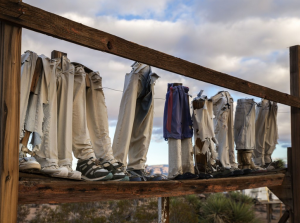
Noah Purifoy From the Point of View of the Little People, 1994 “Noah Purifoy: Junk Dada” at LACMA, Los Angeles (2015)
Noah Purifoy’s art practice was sparked after the 1965 Watts rebellion, during a charged period in Los Angeles’ history of racism. It was August 11, 1965 and a young African-American motorist named Marquette Frye was pulled over by California highway patrolman Lee W. Minikus on suspicion of driving while intoxicated; the incident occurred in Watts, a low-income African-American neighborhood in South Central LA. Widespread outrage at this act of racial profiling set off a rebellion that took 34 lives, injured more than 1,000, led to the arrest of almost 4,000, and destroyed $40 million worth of property. Purifoy’s first major body of work, “66 Signs of Neon” (1966), was created from the charred debris—burnt wood, broken bottles, and ravaged steel—from that event. The artist would also become the founding director of the Watts Towers Arts Center, a community arts center that opened in 1970.
Purifoy’s posthumous retrospective at the Los Angeles County Museum of Art (LACMA), “Junk Dada,” highlights three major bodies of work from his lifelong career: the “66 Signs” project, his 1971 site-specific installation about the black working class at the Brockman Gallery in Leimert Park, and the desert sculptures he made in Joshua Tree from 1989 until his passing in 2004. Alongside Purifoy’s engagement with social injustice, his interests in popular culture and jazz carry through the details of the works on display.
Read the full review on Artsy: https://www.artsy.net/article/artsy-editorial-back-from-rebellion-noah-purifoy-s-socially-charged



